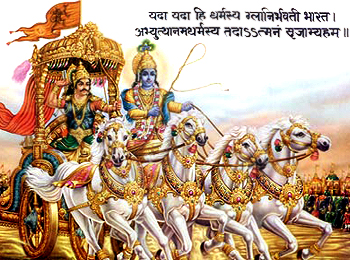 Sanskrit Gnomic Poetry had its beginnings in the Rig Veda. The moral stanzas are preserved in a surprising manner in an episode of the Aitareya Brahmana. Gnomic verses also appear in the Upanishads and the Sutras. Mahabharata is rich in gnomic verses as well as in didactic poetry. It is also evident that Patanjali was also aware of such a literature. However they were not so popular. They cannot be compared to proverbs racy of the soil preserved in their primitive form.
Sanskrit Gnomic Poetry had its beginnings in the Rig Veda. The moral stanzas are preserved in a surprising manner in an episode of the Aitareya Brahmana. Gnomic verses also appear in the Upanishads and the Sutras. Mahabharata is rich in gnomic verses as well as in didactic poetry. It is also evident that Patanjali was also aware of such a literature. However they were not so popular. They cannot be compared to proverbs racy of the soil preserved in their primitive form.
Gnomic verses was first composed or espoused by writers of the fable literature. Before writing it was passed from mouth to mouth till efforts were made by compilers to collect. We need not doubt that the collector became normally an inventor at the same time. Such verses were visible in collections such as Rajanitisanmacaya, Chanakyaniti, Vrddha Chanakja, Laghu-Chanakya. There are seventeen recensions. Each manuscript shows distinct variations; the compilers were diverse, they had many sources open therefore it is impossible to determine the original shape of the collection. There is an absurd assumption that it was composed by Chanakya, the minister of Chandragupta Maurya. It is clear that this composition was passed off under his name as he was famous.
It is not even known whether the first stanza is a treatise on Rajaniti, the conduct of princes. Another composition of Bhojaraja has been preserved in a manuscript that has 576 verses divided into eight chapters. It deals with general rules for the ways of life, general indications on richness and poverty, on fate and human attempt and on variety of ethical and spiritual topics.
The stanzas are not connected by line of thought though there are exceptions. Verses are meant to be adversative. In a group of seven verses different kinds of Brahmin are illustrated. The ordinary character of the topics is improved by the use of metaphors and similes nature. Cloka is the prevailent metre though there are stanzas that are in other metres. They are Indra Vajra, Vancastha, Vasant Tilaka, and Cardulavikridita.
Minor collections of gnomic stanzas are credited to Vararuci, to Ghatakarpara and to Vetala Bhatta. The styles used are Nitiratna, Nitisdra and Nitipradipa. Nitigataka of Bhartrihari is a noticeable work. Under Sankara Varman (883-902) of Kashmir Bhallata, wrote several verses. His Cataka is elaborated and in varied metres. He has employed a simple style.
Another Kashmirian poet Bilhana is also known or his gnomic verses. He has been inspired from Bhartrihari. His verses lack originality. His matter is very interesting than his manner. His date is uncertain, but before the Sadukti-karndmrta (1205), in which he is cited.
Shambhu wrote under Harsha of Kashmir (1089-1101) an Anyoktimuktalata in 108 elaborate stanzas. His Rajendrakarnapura is a eulogy of King Harsha. The Drstantagataka of Kusumadeva is a later work.
Other later compositions include the Bhavacataka of Nagaraja and the Upadevagataka of Gumani. The anthologies are rich in gnomic matter and there are a number of poems which are gnomic. The well known is the Catakastaka. The date of which is uncertain.













